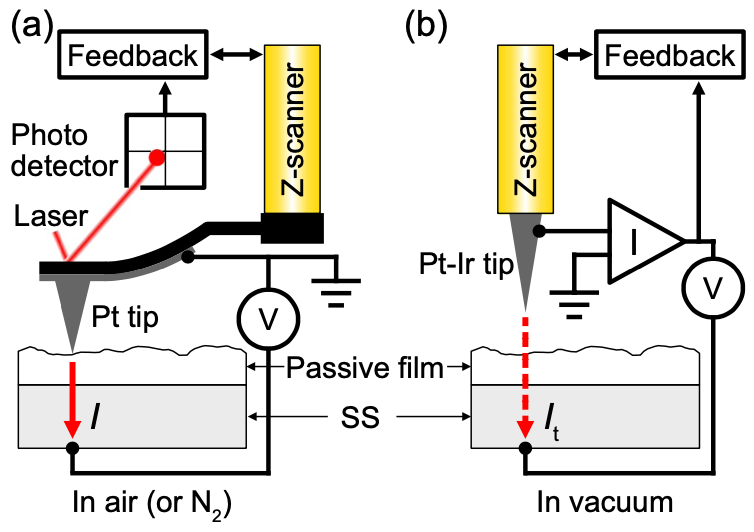Microscopic conductivity of passive films on ferritic stainless steel for hydrogen fuel cells
Hydrogen fuel cells offer a clean and sustainable energy conversion solution. The bipolar separator plate, a critical component in fuel cells, plays a vital role in preventing reactant gas cross-contamination and facilitating efficient ion transport in a fuel cell. High chromium ferritic stainless steel with an artificially formed thin chromium oxide passive film has recently gained attention due to its superior electrical conductivity and corrosion resistance, making it a suitable material for separators. In this study, we investigate the microscopic electrical conductivity of the intrinsic passive oxide film on such ferritic stainless steel. Through advanced surface characterization techniques such as current sensing atomic force microscopy and scanning tunneling microscopy/spectroscopy, we discover highly conductive regions within the film that vary depending on location. These findings provide valuable insights into the behavior of the passive oxide film in fuel cells. By understanding the microscopic electrical properties, we can enhance the design and performance of separator materials in hydrogen fuel cells. Ultimately, this research contributes to a broader understanding of separator materials and supports the wider application of hydrogen fuel cells.
